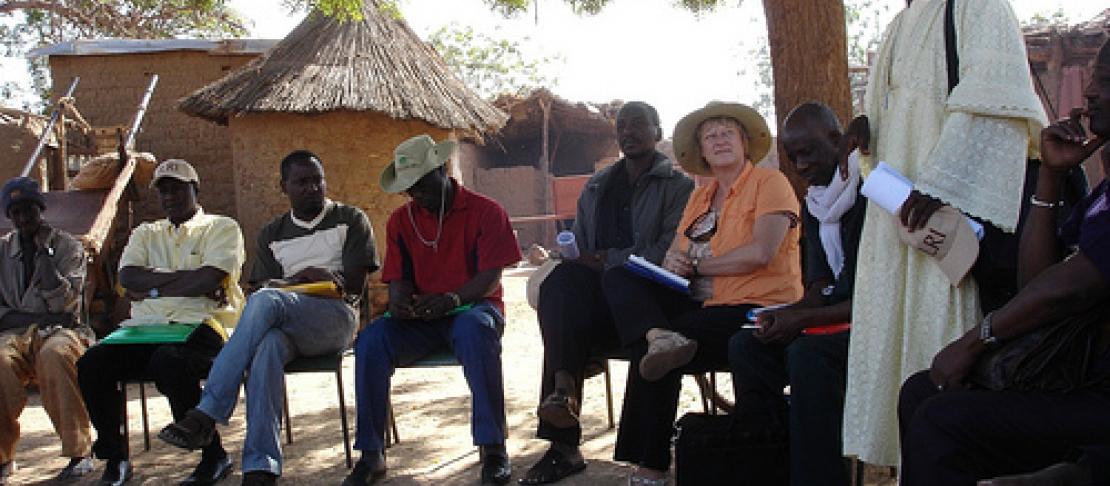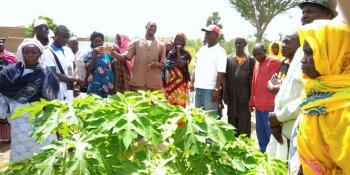How do you prepare for climate change? Baseline survey of farming households

Guest blog by Wiebke Foerch, Science Officer for Theme 4.2 Data and Tools.
What questions should we be asking of smallholder farming families in Sub-Saharan Africa and South Asia if we want to better understand where we stand now with respect to farming practices and knowledge that will allow them to feed, educate and take care of their families — as they face even greater climate-related challenges than ever before? This was the challenge that faced us as we designed what is called a ‘baseline survey’ for the new CCAFS program. And it took the thoughtfulness of many researchers with experience in these incredibly diverse places, along with considerable statistical expertise, to design and implement such a process.
But first, the outcomes. We have carried out the same household-level questionnaire (survey) in 9 countries of East and West Africa, in 70 villages, interviewing 1400 smallholder farm families/households. And in South Asia, we are visiting 133 villages and 2,660 households in 3 countries (India, Bangladesh and Nepal).
The training involved in this undertaking has been substantial, with 12 country survey team leaders, over 100 enumerators, and more than 24 data entry, management and analysis ‘trainer of trainers’ receiving comprehensive instructions and knowledge that they in turn are going back to their countries and passing on to much larger teams. Plus, the questionnaires, training manuals, data entry programs, and statistical analysis programs are freely available on CCAFS website. CCAFS partners have been encouraged to ‘steal with glee’ these very useful materials that can form the base of additional research efforts that build upon, and improve, this statistically rigorous and ambitious baseline survey effort.
So what does this baseline survey cover? First, it aims to gather baseline information at the household-level (i.e. where farming families are now) regarding some basic indicators of welfare, information sources, livelihood/agriculture/natural resource management strategies, needs and uses of climate and agricultural-related information and current risk management, mitigation and adaptation practices. The objective is to capture some of the diversity in the landscape, across communities and households. We are aiming for sufficient precision in some of these indicators to capture changes that occur over time. The same survey has been carried out in very diverse locations and many countries, initially in East Africa, West Africa and the Indo-Gangetic Plains, thus it is not intended to go into depth and explore complex relationships or hypotheses (given CCAFS philosophy that these should be driven from the user needs, as opposed to scientists’ perceptions of the needs!), the intention is the information gathered will inform key research questions to address in further targeted research.
The various components of the survey include basic information on household size, type and education levels; household assets; sources of livelihood; natural resources access and management; adaptation strategies relating to crops, livestock, aquaculture, agroforestry, and land management; food security and risk; information and knowledge; and social networks. The site reports will be available from the CCAFS website soon as well.
The plan is to revisit these households after 5 years, and again in 10 years, to monitor what changes have occurred. The goal is not to attribute these changes to the program, but to be able to assess what kinds of changes have occurred and whether these changes are helping households adapt to, and mitigate, climate change.
Get the Baseline Survey data and materials here


